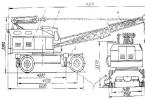Good time of the day!
Today's photo report will show the replacement of an extended chain in the MR20DD engine, as well as the typical symptoms of a stretched chain on the Nissan Qashqai J11.
In our market, this engine has been installed on the Nissan Qashqai J11 since 2013 and on the Nissan X-Trail T32 since 2014.
It is an in-line four-cylinder engine of the MR series with a volume of 1997 cubic meters. cm with direct fuel injection and two variable valve timing.
A 2014 Qashqai with a mileage of 122000 km came to us with complaints about a hard start and uneven engine operation after starting.
In the memory of the electronic engine control unit, there were errors P0014 (deviation of the ignition timing from the norm) and P0300 (multiple misfires).
According to the owner, difficult starting and uneven operation of the engine appeared some time ago and gradually progressed.
Remove the timing case cover: the main chain tensioner is extended by 16mm.
Compare the new and old chains - the stretch is significant.
Below in the photo, the new chain is hung over the old one, you can see the tension.
This motor was equipped with 2 revisions of the chains, both double-row.
The tensioner itself and dampers are in good condition, so we only change the chain (of course we put the last revision), the front crankshaft oil seal and all the O-rings on the engine cover.
After installing a new chain, the engine started with a half turn.
In addition, direct injection engines are very sensitive to fuel, therefore it is recommended to periodically flush the injector for preventive purposes.
If you encounter such malfunctions in the engine operation or hear noises characteristic of the chain stretching, do not overtighten with the replacement - this will avoid wear of the rest of the engine parts.
We wish everyone a long and trouble-free operation of your cars!
.jpg)

FUNCTIONAL PURPOSE OF THE TIMING BELT
Replacing the timing belt is part of the routine maintenance of the Nissan Qashqai and plays an important role in the performance of the vehicle's engine. Untimely replacement of the belt can lead to a malfunction of the engine, and a break can lead to deformation of the valve of the gas distribution mechanism and the need for an overhaul of the engine.
All parts of the gas distribution mechanism are closely connected with each other, the injection of an air-fuel mixture drives the piston of the engine cylinder, which in turn pushes the crankshaft, which is connected by a drive belt to the camshaft. Thus, the camshaft moves, which regulates the frequency of the valves. The Nissan Qashqai timing belt connects the gears and transmits torque from the crankshaft to the camshaft, affecting the speed of its rotation. If the system is working properly, the frequency of their revolutions should be equal.


TIMING BELT FAULTS
- Timing belt wear leads to a change in the force of transmission of torque from the crankshaft to the camshaft, as a result of which there is a change in the frequency of movement of the pistons and engine valves. This, in turn, leads to a failure in the operation of the gas distribution system, rapid heating of the engine and, as a consequence, a decrease in engine power and an increase in the consumption of the fuel mixture. For reliable and trouble-free operation of the motor, it is necessary that the valves close and open at the same frequency as the engine pistons. If, due to wear, slippage of the timing belt occurs, this can cause a break.
- Broken timing belt Nissan Qashqai is the most dangerous engine damage. In the event of such a malfunction, the camshaft ceases to be associated with the crankshaft and can stop completely arbitrarily in such a position in which any of the valves of the gas distribution mechanism will be open. In this case, the piston, moving upward, can collide with the valve, which will lead to its deformation. In this case, the car engine is in danger of serious repairs. It should be noted that the timing belt breakage does not happen unexpectedly, almost always this is accompanied by changes in the operation of the car's engine, a decrease in its power, a change in gasoline consumption, the occurrence of extraneous squeaks, squeaks, etc.
To prevent and prevent the operation of the gas distribution mechanism, it is necessary to periodically replace the timing belt, this will save the engine of the Nissan Qashqai from damage, prevent premature engine wear and increase its service life.

.jpg)
.jpg)
REASONS AND ASSESSMENT OF TIMING BELT WEAR
Timing belt wear occurs for a number of reasons, avoiding which you can extend the life of the car engine.
To prevent complete wear of the timing belt, it is necessary to periodically, during a visual inspection of the gas distribution mechanism, check for damage on the surface of the belt. To inspect and evaluate the belt drive, it is necessary to unscrew and remove the protective cover of the mechanism, under which the engine is hidden. The first signs of wear are:
- the appearance of oil and antifreeze smudges capable of chemically destroying the timing belt, with prolonged exposure;
- the occurrence of longitudinal cracks on the back surface of the belt;
- the formation of transverse cracks on the inner surface of the drive belt;
- a loose surface and a violation of the integrity of the edge are also a sign of wear;
- the wear of the belt is also indicated by rubber dust on the surface of the part;
- if the timing belt teeth began to peel off or wear off, the part must be immediately replaced with a new one.
.jpg)
.jpg)
SYMPTOMS OF THE TIMING BELT
- Increased consumption of gasoline by car
- Decreased engine power
- Complete stop of the car on the move, when trying to start the engine does not start, and the starter rotates easier than usual
- Unstable engine idling and in motion;
- The occurrence of shots in the receiver of the injector and the exhaust pipe
All these malfunctions may indicate a shift in valve timing and a loosening of the belt tension. If on your Nissan Qashqai you notice one or more of the signs and this list - immediately contact the service station for an inspection.
HOW OFTEN YOU NEED TO REPLACE THE TIMING BELT Nissan Qashqai
The frequency of replacing any consumables for vehicles depends on the driving style and mode of operation of the vehicle. With extreme driving style and aggressive use of the vehicle, it is necessary to replace the timing belt as it wears out and the teeth wear off.
Under normal operating conditions, it is necessary to replace the original timing belt as planned, every 60 - 70,000 km. mileage. During this period, it develops its resource and becomes unusable. If your Nissan Qashqai has an analog belt, it must be replaced a little earlier than the time recommended by the vehicle manufacturer.
WHICH TIMING BELT IS BETTER TO CHOOSE
Modern belts for the gas distribution system are a high-tech product, characterized by increased strength and wear resistance, capable of withstanding high dynamic loads. Timing belts are made of neoprene or polychloroprene reinforced with durable fiberglass, nylon and cotton cords.
- To avoid the mistake associated with buying a timing belt, contact the specialists who will help you order a timing belt suitable for your car's engine using the WIN code of your car. This part is one of the most important in the design of the engine, the slightest deviation in the length, width, shape and size of the teeth can lead to engine problems in the Nissan Qashqai.
- Do not try to save money when buying a timing belt, a cheap product can be a low-quality fake, which will quickly deteriorate and may cause serious engine damage in the future. The best option for any car is original parts, their cost is higher than analog ones, but when operating the car, they quickly pay for themselves.
- When buying a timing belt, check it for rigidity, a good belt should be elastic and easy to bend. The worse the belt, the more rigid it will be.
- The presence of teeth, sagging, pores on the belt is not allowed - these are signs of a low-quality belt that will quickly become unusable. The surface of the product must be smooth, small burrs are allowed.
- When buying by yourself, check the timing belt part number printed on the back, it must correspond to the WIN code of the car. If it is not possible to compare the code of the belt and the car, then it is necessary to make a visual comparison of the old and new belt, they must be completely identical.
- To avoid buying a fake, try to purchase spare parts only from authorized, verified dealers.
- Do not skimp on a qualified timing belt replacement, contact our certified car service, where competent mechanics will help you repair your Nissan Qashqai. And in the spare parts store, you can buy original spare parts for your car.



FUNCTIONAL PURPOSE OF THE TIMING CHAIN
The timing chain drive of the Nissan Qashqai is part of the timing mechanism and is involved in the transmission of torque from the crankshaft to the camshaft. The chain can connect them directly or participate in the work indirectly, for example, connecting the camshafts with each other, if there are two of them, while its functional purpose remains unchanged.
Monitoring the timing chain condition, replacing dampers and tensioners, is part of the scheduled maintenance of the vehicle and plays an important role in the operation of the vehicle's engine. It is necessary to monitor the condition of the gas distribution system regularly, as this directly affects the vehicle's power, sensitivity when supplying gas and fuel consumption.



FEATURES OF CHAIN REPLACEMENT
In most engines of old car models, chains with roller links were used to transmit torque, often the components went in two or three rows, this made the timing chain a very reliable, almost eternal mechanism that did not need constant maintenance. Often the car traveled up to 300,000 km. and the chain of the mechanism received only lateral play, and the worst thing that could happen to the gas distribution mechanism was the jumping of the links, breaks were extremely rare. Over time, the trend in the creation of cars has become the production price, efficiency, environmental friendliness and the weight of the car's engine, which affects its power. In these conditions, manufacturers began to strive to replace the timing chain with a lighter, cheaper and easier to maintain timing belt. And those motors in the design of which the chains were preserved, the roller components were replaced with light plate links, more reliable than timing belts, but still not as strong as roller chains.
The Nissan Qashqai timing chain has a number of features that fundamentally distinguish it from the timing belt.
1. The chain is a durable mechanism, its wear takes much longer than the timing belt, breaks occur, but much less frequently than in belt-driven engines.
2. An open circuit of the gas distribution mechanism occurs quite rarely, which means that an engine breakdown, requiring expensive overhaul, does not occur often.
3. Timing chains are quite noisy, but with the current level of car sound insulation, this parameter becomes not very important.
4. When the chain is worn out, its backlash and lateral runout occur, this indicates the need to replace the old chain with a new one. Since the metal part is sagging and lateral beating is accompanied by strong noise, it is simply impossible not to notice and not attach importance to it. The noise under the hood will be the first "call" indicating the need for vehicle maintenance.
5. The main disadvantage of replacing the timing chain of the Nissan Qashqai is that it is located inside the cylinder block and it is rather difficult to assess its condition without training and experience. In addition, dismantling and replacement, with such a device, is a long and laborious process, which means it is expensive.
6. Tensioners and dampers are involved in the timing chain - these are consumables that wear out quickly and need more frequent replacements than the timing chain itself.
TYPES OF FAILURES
1. At the timing chains, with full serviceability, a natural course is observed, which is compensated by the tensioners when the oil pressure is applied. A malfunction is considered to be a strong lateral beating of the timing chain, which appears when the links are stretched. It is possible to determine the real degree of chain stretching only with a qualified inspection of the gas distribution mechanism.
2. Backlash is a direct stretch of the chain, which is observed during long-term operation, can lead to jumping of the chain links and malfunction of the gas distribution mechanism, this leads to a decrease in the sensitivity of the engine when the accelerator pedal is pressed and an increase in fuel consumption.
3. Opening the timing chain of Nissan Qashqai - is the most dangerous damage to the engine, in the case of a chain drive of the motor, it is not common, but it does take place. In the event of such a malfunction, the camshaft ceases to be associated with the crankshaft and can stop completely arbitrarily in such a position in which any of the valves of the gas distribution mechanism will be open. In this case, the piston, moving upward, may collide with the valve, which will lead to its deformation and the car engine will face serious repairs. It should be noted that the timing chain breakage does not occur unexpectedly, almost always this is accompanied by changes in the operation of the vehicle, a decrease in its power, a change in gasoline consumption and the occurrence of extraneous noise.
To prevent and prevent the operation of the gas distribution mechanism, it is necessary to periodically troubleshoot the timing chain, this will save the car engine from damage, prevent premature engine wear and increase its service life.



CAUSES OF WEAR
1. Operation of the car Nissan Qashqai in extreme conditions. Frequent driving on unpaved roads, towing trailers, heavy loads, driving at high speeds leads to an increase in the load on the crankshaft, spinning it up to maximum speed, which leads to a stretching of the timing chain.
2. Since the timing chain is located inside the cylinder block, it is completely washed by engine oil and, as a result, is very sensitive to its quality. In the case of using high-quality synthetic oil containing specialized detergents in its composition, the service life of the timing chain is significantly increased.
3. The timing chain involves parts that regulate the tension of the chain, they are consumable and need to be replaced periodically. During maintenance of the car, it is necessary to check the degree of wear of the tensioner and "damper"; untimely replacement of these parts can lead to the chain stretching and jumping of the links.
SYMPTOMS OF MALFUNCTIONS
1. Increased consumption of gasoline by car;
2. Decrease in engine power; 3. The appearance of clanking and noise under the hood of the car when the engine is running;
4. Complete stop of the car on the move, when trying to start the engine does not start, and the starter rotates easier than usual;
5. Unstable operation of the Nissan Qashqai engine at idle and in motion;
6. The emergence of shots in the receiver of the injector and the exhaust pipe.
All these malfunctions may indicate a shift in valve timing and a loosening of the chain tension. If you notice one or more signs of this list on your car, immediately contact the service station for an inspection.



HOW OFTEN DO YOU NEED TO REPLACE THE TIMING CHAIN
The frequency of replacement of any consumables for Nissan Qashqai vehicles depends on the driving style and the mode of operation of the vehicle. With extreme driving style and aggressive use of the vehicle, it is necessary to replace the timing chain as it looses and wears out.
Under normal operating conditions, it is necessary to replace the timing chain as planned, every 100 - 150,000 km. mileage. If your car has an analog belt, it must be replaced a little earlier than the time recommended by the vehicle manufacturer.
Trust your car only to professional specialists who are able to correctly troubleshoot the timing chain, assess lateral runout and backlash, replace and correct the operation of tensioners, chain drive “dampers” and replace the Nissan Qashqai timing chain.
Gasoline engine Nissan Qashqai 2.0 liters of the MR20DE series can be found not only on Nissan models, but also on Renault cars under the M4R index. The power of the gasoline aspirated varies from 133 to 147 hp. depending on the settings. The motor is quite modern, its development was completed in 2005. The engine is assembled mainly in Japan. 
The device of the Qashqai 2.0 liter engine.
The inline 4-cylinder 16-valve gasoline engine has an aluminum cylinder block. Timing chain drive, there is a variable valve timing system with a phase shifter on the intake camshaft. There are no hydraulic compensators in the cylinder head. It is necessary to adjust the valves manually by selecting pushers-washers of different thicknesses.
Nissan Qashqai 2.0 Engine Cylinder Head

Nissan Qashqai block head made of aluminum alloy. Two camshafts rotate in the bearing housing, which press with their cams directly on the valves through special pushers. The camshafts are not attached with separate covers, but with a common pastel. Candle wells have very thin walls, an overabundance of force when tightening the candles leads to cracks in the cylinder head. The mechanism for changing the valve timing on the intake shaft is implemented using a hydraulic system. The increase in pressure causes an increase in the deviation of the camshaft from the nominal position relative to the valve axes. The oil pressure level is controlled by a solenoid valve controlled by the electronics of the Nissan Qashqai engine.
Timing drive of the Nissan Qashqai 2.0 engine
Timing drive Nissan Qashqai 2.0 chain... There are two chains. One larger sprocket drives the camshafts, the second small sprocket of the oil pump. With intensive use, the chain begins to stretch after 100,000 runs. This leads to phase displacement, which even the automation that controls the phase shifter cannot correct. The timing diagram is further in the photo.

Nissan Qashqai 2.0 engine specifications
- Working volume - 1997 cm3
- Number of cylinders - 4
- Number of valves - 16
- Cylinder diameter - 84 mm
- Piston stroke - 90 mm
- Timing Drive - Chain (DOHC)
- Power hp (kW) - 141 (104) at 6000 rpm. in min.
- The torque is 196 Nm at 4800 rpm. in min.
- Maximum speed - 195 km / h
- Acceleration to the first hundred - 10.1 seconds
- Fuel type - AI-95 gasoline
- Fuel consumption in the city - 10.4 liters
- Combined fuel consumption - 7.8 liters
- Fuel consumption on the highway - 6.3 liters
It is worth noting that in the first generation of Qashqai, this engine showed a power of 141 hp. the second generation of the crossover with the same power unit shows 144 horsepower.
The timing chain rotates the engine shafts, due to which air is mixed with fuel in the right proportion and enters the power unit of the car, and the exhaust gases are removed from it. The operation of the gas distribution mechanism directly affects the operational performance of the engine, therefore, its condition must be carefully monitored and, if the slightest signs of malfunction are detected, take action. When the timing chain or belt breaks, expensive car repairs are inevitable.
Features of the chain mechanism on the Nissan Qashqai
Timing for Nissan Qashqai with engine displacements of 1.5 and 2.0 liters, as well as for other gasoline chain-type units, while the Nissan Qashqai 1.6-liter gas distribution system, which uses diesel as fuel, has a timing belt.
Replacing the chain of the Nissan Qashqai 2.0 l, 1.2 l, 1.5 l mechanism should be performed according to the regulations every 150-200 thousand kilometers, and the belt on 1.6 l diesel engines should be changed after the same time interval.

The chain mechanism is more reliable and durable than the belt, and, as a rule, it needs to be changed less often than is usually indicated in the manual. In most cases, it effectively performs its functions even after 150 thousand km and can serve up to 250-300 thousand km without any complaints.
However, unlike a belt, the chain system contributes to a higher noise level during the operation of the motor, and also differs in more difficult work when changing this element.
How to replace the chain of the mechanism
When working with a timing chain on a Nissan Qashqai 2L or other gasoline engines, done by hand, you must follow the following sequence of actions:











